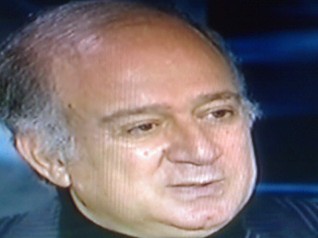Lebanon & Hizbollah after the explosion.

Tarek Heggy
2020 / 8 / 22
Lebanon and Hezbollah---The Beautiful and the Ugly
Lebanon is a relatively new country that came into existence only a century ago. Before 1920, it had politically been part of Greater Syria and finally won its freedom from France on November 22, 1943. Since day one, Lebanon has been unique with its 19 sectarian groups and a constitutional custom that dictated the president of the republic to be a Maronite (Catholic), the parliamentís speaker a Shiite Muslim, and the prime minister a Sunni Muslim. Despite this complex nature, Lebanon managed not only to remain a peaceful society, but succeeded in being the most refined, civilized and flourishing country in the Arabic speaking Middle East for almost 55 years. But over the last 45 five years, its stability, social harmony, peace and prosperity have been destroyed by two demographic changes: the influx of Palestinians that triggered the 15-year civil war from 1975, and the political role that the pro-Iran Lebanese Shiites started to play soon after.
These days, the Palestinian factor is history-;- the Shiite influence now dominates Lebanonís troubled new phase. The Pro-Iran Shiites are represented by Hezbollah which has created a state within a state with a much stronger military arm. Hezbollah has been fighting inside Lebanon and with the Syrian regime inside Syria. It is believed to have been responsible for the assassination of Lebanonís Prime Minister Rafik Hariri in 2005.
On August 4, Beirut witnessed the biggest non-nuclear explosion in history killing about 200, injuring another 6000, leaving up to 300,000 people homeless and causing perhaps -$-15 billion in damage. But notwithstanding its catastrophic consequences, the fact is that this tragedy has opened a new era in Lebanonís history where we are likely to see pressure to diminish the power, role and influence of Hezbollah, and not just domestically. The Lebanese peopleís rejection of Hezbollah has already started as we have seen with the demonstrations on its streets. The slogans of these outraged demonstrators were not in the main aimed specifically at Hezbollah - but everyone inside and outside Lebanon understands that the Lebanese people are demanding an end to politics as it is presently conducted.
The visit of the French President to Beirut last week was not an ordinary public relations exercise-;- it was making a statement to the region. Many in the region now support the idea that following the explosion it is time to rein in the power and influence of Hezbollah, domestically and regionally. However, let us not for a moment discount the idea that Hezbollah could resist such pressure, perhaps by staging a military confrontation with Israel. Ever since Hezbollah became a state within a state in Lebanon, it has destabilized the region, the roots of which can be traced back to Ayatollah Khomeiniís return to Iran on February 1, 1979, a date not only disastrous to Iran, but equally to both the Middle East region and to humanity.
Khomeiniís return was the beginning of the expansion of two extremely hazardous forms of radicalism: the Shiite Islamism Khomeini led, and the radical Sunni Islamism that appeared in reaction to it. These two groups hate each other, and others in general, especially Christians and Jews. They are both enemies of modernity, otherness, cultural and religious tolerance, womenís rights and freedom of belief and of expression.
Add comment
 | Copy to WORD
| Copy to WORD  | Copy
| Copy  | Save
| Save  | Search
| Search  | Send your comment
| Send your comment  |
|  Add to Favorite |
Add to Favorite |
 |
Modern Discussion
|
Modern Discussion  |
|
 Email |
Email |